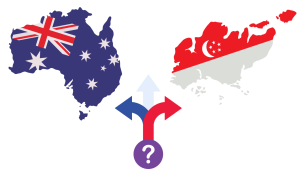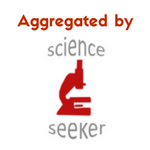This blog post was written by Jimmy Yu (see LinkedIn page) with supervision by Dr. Chih Wei Teng.
 Countries that responded better during the COVID-19 pandemic showed good, coordinated efforts between different government agencies and departments. Known as the “whole-of-government approach,” this model would help Australia become more self-sustainable in research, manufacturing and commercializing medicine domestically, avoiding breakdowns in the supply chain or lack of availability of critical medicines.
Countries that responded better during the COVID-19 pandemic showed good, coordinated efforts between different government agencies and departments. Known as the “whole-of-government approach,” this model would help Australia become more self-sustainable in research, manufacturing and commercializing medicine domestically, avoiding breakdowns in the supply chain or lack of availability of critical medicines.
Singapore
A prime example of a whole-of-government approach is Singapore’s proactive attitude towards the life sciences and biotechnology space since 1991, with significant investments in critical infrastructure for manufacturing, research, education and attracting foreign direct investment. As a result, Singapore has become one of the world’s largest pharmaceutical and biologics manufacturing hubs, with about 18 biopharmaceutical manufacturing plants operational in 2019 contributing about 20 per cent of the country’s total manufacturing output just from the sector alone [1].
Singapore’s whole-of-government approach in the biomedical sector is characterized by significant co-investments with universities and industry, sizeable investment in land and real estate, legal frameworks, and different ministries, including Trade and Industry and Education.
Critically, the coordination and collaboration involving the Economic Development Board (EDB), the Agency for Science, Technology and Research (A*STAR), the Ministry of Trade and Industry (MTI), the Ministry of Education (MOE), the Ministry of Health (MOH), and other sectors has led to the establishment of policies, resources, research, and educational architecture that fosters the growth of the sector [1-4].
In 1991, Singapore prioritized the biomedical sector for economic development. It created the Biomedical Sciences Initiative (BSI), offering tax incentives and funding to attract pharmaceutical companies to establish operations and develop a skilled workforce. The Biomedical Sciences Industry Development Plan (BMS IDP), launched in 2000, focused on biomedical research, industry and talent development. This included infrastructure investment in the Biopolis research hub, industry development support, and the Biomedical Manufacturing Cluster (BMC) for manufacturing activities [5, 6].
MTI, MOE and MOH have been heavily involved in developing policies and initiatives to support the biomedical sector, including the Biomedical Sciences Industry Partnership Office (BSIPO), which was established in 2007 to facilitate partnerships between the government, academia and industry in the biomedical sector, and the Health Sciences Authority (HSA), which regulates the import, manufacture and supply of medical devices and pharmaceuticals in Singapore [2, 4, 5].
To encourage foreign investment, the Singapore Government has provided significant funding for research and introduced favourable tax regimes and free trade agreements. Efforts to attract foreign investment and talent have been very successful, with more than 30 multinational corporations, including Glaxo SmithKline, Novartis and Pfizer, basing their operations in Singapore [1, 3, 4, 8].
The Singapore Government further supported start-ups and businesses to access new avenues of growth, build differentiated market offerings, and accelerate time to market through initiatives such as the Open Innovation Network (OIN). Singapore’s emphasis on collaboration between clinicians and academics has led to significant venture capital investments and the development of advanced medical therapies [9-13]. The Biopolis and Jurong Innovation District are advanced laboratory facilities and industrial estates designed to facilitate collaboration between academia, research organizations, and industry. Additionally, Singapore’s Changi International Airport and shipping ports provide convenient access to a global network of ports, connecting Singapore-based companies to a global supply chain that links to over 100 countries [1, 2, 9, 14].
In 2011, the government launched the Research, Innovation and Enterprise (RIE) 2015 plan, which aimed to build on the achievements of the BMS IDP and focus on developing new technologies and products. The RIE 2015 plan provided funding for research and development in the biomedical sector and emphasized the importance of collaboration between the public and private sectors. An updated RIE 2020 plan allocated a further S$19 billion to establish I&E (Innovation & Enterprise) platforms and promote technology commercialization.
The success of previous initiatives, such as the RIE 2015 plan, paved the way for introducing the RIE 2025 plan in 2021. This allocated an additional S$25 billion in funding to support local enterprises further and advance innovation and entrepreneurship. These efforts were channelled through I&E platforms, aiming to drive innovation and foster collaboration in line with the RIE 2025 plan’s goal of building an innovation-driven economy [5, 6].
The success of these efforts has led to Singapore’s biomedical manufacturing output more than tripling from S$6.3. billion in 2000 to S$21 billion in 2009, and the sector now represents 10 per cent of the country’s manufacturing output [15, 16]. In 2018, Singapore’s biomedical manufacturing sector contributed 4 per cent of GDP, generating S$15.7 billion in manufacturing output and S$9.4 billion in value-add [1]. Singapore’s success is not solely based on industry investment but through its comprehensive approach and the country’s overall focus on innovation and research, which created an entire ecosystem for growth in the biomedical sector.
Australia
Australia’s tradition of collaboration between government, industry and academia has led to successful outcomes in areas such as medical research [17]. However, its federal system of government, with power divided between the national government and the states and territories, has made it more difficult to achieve a coordinated whole-of-government approach. Nonetheless, the government has played a crucial role in developing the biomedical sector in Australia since the 1980s [18]. Establishing grants that promote private-public partnerships, such as the Cooperative Research Centres (CRC) Program in 1987, has encouraged collaboration between industry, research institutions and government agencies to solve complex industry problems, and develop innovative solutions [19].
The Australian Government’s lead investment vehicle in health and medical research comes from the National Health and Medical Research Council (NHMRC), and its continued investment in the biomedical sector paid off in the early 2000s with the development of new drugs and medical technologies, including the world’s first cervical cancer vaccine, Gardasil [18]. The government’s support for the growth of the biomedical sector includes several key departments, such as the Department of Industry, Science and Resources, which provides support for businesses and entrepreneurs in the sector and oversees the Biomedical Translation Fund (BTF), providing funding for early-stage biomedical research projects.
The Department of Education and Training develops education and training programs, and offers funding for research and scholarships. The Department of Foreign Affairs and Trade promotes and establishes international collaborations. The government has provided several benefits and tax incentives for companies to invest in R&D, including the Research and Development Tax Incentive (RDTI), offering up to 43.5 per cent tax offset, and the Early-Stage Innovation Company tax incentives that provide a non-refundable carry-forward tax offset of 20 per cent and CGT exemption for investors. The government provides further significant support for R&D, with a particular emphasis on promoting collaboration between industry, universities, and research institutions through initiatives such as the Medical Research Future Fund (MRFF), an AU$20 billion investment fund established in 2015, aimed at supporting cutting-edge medical research and technology [20]. Other examples include The Australian Regenerative Medicine Institute (ARMI), an AU$153 million medical research-based infrastructure established at Monash University in 2009, which is a joint investment between Monash University and the Victorian government, focusing on the discovery and delivery of regenerative medicine. ARMI is at one of the world’s largest regenerative medicine hubs for research and publication, with strong commercialization potential [17].
As a result of these efforts, Australia has laid a robust foundation that has resulted in ground-breaking therapies, including the world’s first cochlear implant, Gardasil, and the world’s first spray-on-skin. These pioneering innovations exemplify the nation’s commitment to pushing the boundaries of scientific advancement [21, 22]. Australia has been ranked in the world’s top ten for output of top-quality research articles, and the medical sector has seen significant patent application filings, demonstrating a thriving research and development environment [21]. Notably, venture capital investment in the Australian regenerative medicine sector has been steadily increasing, with AU$173 million in funding raised between 2016 and 2020, and companies such as Cynata Therapeutics, Mesoblast and Avita Medical raising significant funds [23].
Comparing the two government approaches
Australia and Singapore have taken very different approaches to developing their biotech industries. While Singapore has implemented a whole-of-government approach, prioritizing manufacturing and commercialization of biotech products, Australia has placed more emphasis on academic research and innovation. This has resulted in significant differences in the growth and success of their biotech sectors.
Singapore’s government has made substantial investments in infrastructure and established an attractive environment for foreign investments, leading to the exponential growth of its biomedical manufacturing sector. Singapore’s approach involves a long-term plan, developed over several five-year RIE plans, and the government takes a whole-of-government approach where the different ministries understand their role and contribution to developing the biomedical sector. The Singapore government has achieved this through working cross-domains. The RIE 2025 plan shows cross-domain capabilities, including using Artificial Intelligence, MEMS, digitalization in the aviation and maritime sectors, improving air traffic management, and additive manufacturing, including 3D printing [5]. Singapore has focused on creating an attractive place for companies to invest and operate out of, such as through favourable tax incentives. It has emphasised the importance of commercialization over research and innovation. This focus has made Singapore an attractive place for venture capital (VC), leading to a high ratio of VC to GDP and a ranking of 8 out of 131 countries on the global innovation index, the highest in the East Asian region [4].
In comparison, Australia’s approach has focused on academic research and innovation, with less emphasis on manufacturing and commercialization, as the government assumes good research development will lead to investors taking on the commercialization role. Therefore, most of Australia’s grants, regardless of whether they promote advancement towards research, manufacturing or commercialization, will have a university attached to them. While the government has introduced programs such as the RDTI and the modern manufacturing initiative (MMI) to incentivize global companies to invest in R&D, the focus still requires a strong emphasis on academic collaboration vs commercialization. Australia’s academic culture of “publish or perish” mindset, which prioritizes publication over commercialization, has reinforced the fact that researchers typically use grants/university funds to invest in projects with limited long-term utility and may not contribute significantly to commercialization [24, 25].
In conclusion, both Australia and Singapore have recognized the potential of the biotech sector, and each country has taken a different approach to foster its development. Singapore has focused on the coordinated efforts of its Ministries in creating a favourable environment for foreign investment and establishing itself as a sovereign manufacturer in the field. In contrast, Australia has prioritized collaboration between universities and industries, supporting R&D initiatives. To progress towards being a global competitor in the regenerative medicine sector, the Australian government needs to provide a stable and competitive business environment for innovative companies and incentivize global investment in R&D. By taking inspiration from Singapore’s whole-of-government approach, Australia can develop strategies involving coordination and collaboration among various government departments to establish a strong research, manufacturing and commercialization ecosystem.
CCRM Australia Clarity is a multi-disciplinary think tank with a market research and reporting mission to accumulate thought leadership and analysis to facilitate the commercialization and diffusion of regenerative medicine into the health care sector.
References
- Liz Killen, M.P., and Franco Gonzalez., Singapore’s biomedical cluster: Lessons from two decades of innovation and manufacturing policy, E. Whellams, Editor. 2021, University of Cambridge: Cambridge Industrial Innovation Policy.
- Van Epps, H.L., Singapore’s multibillion dollar gamble. J Exp Med, 2006. 203(5): p. 1139-1142.
- Singapore, E. The Singapore Economic Development Board (EDB), who we are. 2022 [cited 2023 16/04]; Available from: https://www.edb.gov.sg/en/about-edb/who-we-are.html.
- Dr Gayatri Sharma, C., Harnessing Singapore’s cell therapy infrastructure to propel innovation in the greater cell and gene therapy ecosystem for patient benefit. 2022.
- Medina, A.F., Why Use Singapore as a Base for ASEAN Expansion. 2021: ASEAN Briefing.
- Singapore, G.o., RIE 2025 plan. 2021: National Research Foundation, Prime Minister’s office, Singapore.
- Phacilitate, Singapore’s Cell Therapy Advanced Manufacturing Programme (STAMP). 2020: Phacilitate.
- Medina, A.F., How Singapore is Poised to Take Advantage of Industry 4.0. 2022: ASEAN Briefing.
- LaSalle, J.L. How a boom in life sciences funding impacts real estate. 2021; Available from: https://www.jll.com.sg/en/trends-and-insights/investor/how-a-boom-in-life-sciences-funding-impacts-real-estate.
- Lee, L., Singapore’s Vickers Venture targets $500 million fund late-2018, eyes biotech, nanotech, AI, C. Cushing, Editor. 22018.
- Sonja Marjanovic, S.N.C., Health and Medical Research in Singapore: Observatory on Health Research Systems. 2010, Health Research and Development Policy Research Unit of the Department of Health (England). p. 51.
- Singapore, G.o. Growing a Vibrant National Innovation System. 2021; Available from: https://www.nrf.gov.sg/rie2025-plan/growing-a-vibrant-national-innovation-system.
- Patchen, T., Big Pharmas team up with local Singapore organizations to boost manufacturing, in ENDPOINTSNEWS. 2022: ENDPOINTSNEWS.
- Spotlight on Singapore. Nature, 2008.
- Sinha, G., Singapore injects $12.5 billion. Nature Biotechnology, 2010. 28(12): p. 1229-1229.
- Hawksford. What makes the Singapore economy tick? [cited 2023 03/07].
- Michael Morrison, J.G., Australia’s medical innovation approach: Is it suitable for regenerative medicine? Open Access Government., 2022.
- Dyke, T. and W.P. Anderson, A history of health and medical research in Australia. Med J Aust, 2014. 201(S1): p. S33-S36.
- Program, A.C.R.C., Cooperative Research Centres (CRC) Programs CRC Grants over time. 2022: Australian Government Department of Industry, Science and Resources.
- care, D.o.H.a.A. Medical Rsearch Future Fund. 2023; Available from: health.gov.au/our-work/medical-research-future-fund.
- Commission, A.T.a.I. Insight – Australian innovation behind life-changing medicines. 2022; Available from: https://www.austrade.gov.au/news/insights/insight-australian-innovation-behind-life-changing-medicines.
- council, c. The HPV vaccine. 2023 [cited 2023 03/07]; Available from: https://www.hpvvaccine.org.au/hpv-vaccine.
- AusBiotech, M.A., Cell Therapies Pty Ltd, Novartis Pharmaceuticals Australia Pty Ltd, Biointelect Pty Ltd, Research Strategies Australia and Australia’s Industry Growth Centre, MTPConnect. , A Strategic Roadmap for the Regenerative Medicine Sector Prepared by Research Strategies Australia, in Regenerative Medicines Consortium Project. 2021: AusBiotech
- Jared Mondschein, R.R., Will the government’s $2.2bn, 10-year plan get a better return on Australian research? It all depends on changing the culture, M. Ketchell, Editor. 2022: The Conversation.
- Jared Mondschein, R.R., Vik Naidoo, Our unis are far behind the world’s best at commercialising research. Here are 3 ways to catch up, M. Ketchell, Editor. 2021: The Conversation.
CCRM Australia
Latest posts by CCRM Australia (see all)
- CCRM Australia: Lessons from the front line of commercialization - October 1, 2025
- CGTs in elite sport: The pinnacle of human evolution or the unnatural demise of fair competition? - April 21, 2025
- Learnings from First Nations’ traditional medicine could enhance the effectiveness of regenerative medicine - October 6, 2023






Comments